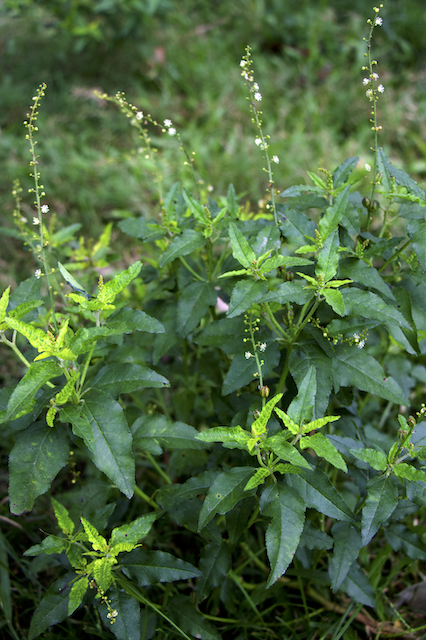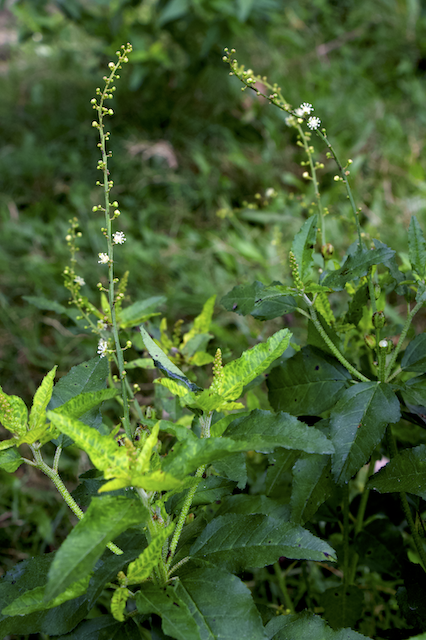

Identification Notes



EPPO CodeCVNBO |
Life CycleAnnual |
MorphologyStem: erect, branched, woody at base, with thick rootstock; Leaves: simple, alternate, broadly ovate, elliptic serrate, with two glands at the base; Inflorescence: racemose, bract minute, flowers unisexual, lower few flowers female, upper male; Fruit: Schizocarp |
Growing seasonRabi and Kharif |
Germination periodOctober to March |
Flowering periodDecember to June |
PropagationBy Seed |
HabitatFound in the roadsides, fallow high lands and levee of crop fields |
Weed potential- |
Control measureEradication and Chemical control |
Recommended herbicideNon-selective herbicide Glyphosate |
DistributionNative to South America (from Bolivia to Argentina); introduced and naturalizing in Africa (Kenya), South-east Asia from Pakistan to Laos, Malay Peninsula (incl. Singapore), Borneo, Sulawesi, and probably further. |
Medicinal propertiesCroton bonplandianus stem has a milky sap that is at times used in healing small cuts and wounds. The plant has medicinal uses in Ayurveda and traditional herbal medicine, in the treatment of stomach ailments, cholera, colds, cough, diabetes, jaundice, dropsy, chicken pox, malaria, rheumatism, liver complaints, inflammations, eye diseases and many other common illnesses. The plants also have antibacterial, anticancer, anticoagulant, antioxidant, larvicidal and cytotoxic propertiess. The ash from burnt plants are also used as a detergent. Leaf extracts are used as pesticides and mosquito repellents. |
References- |